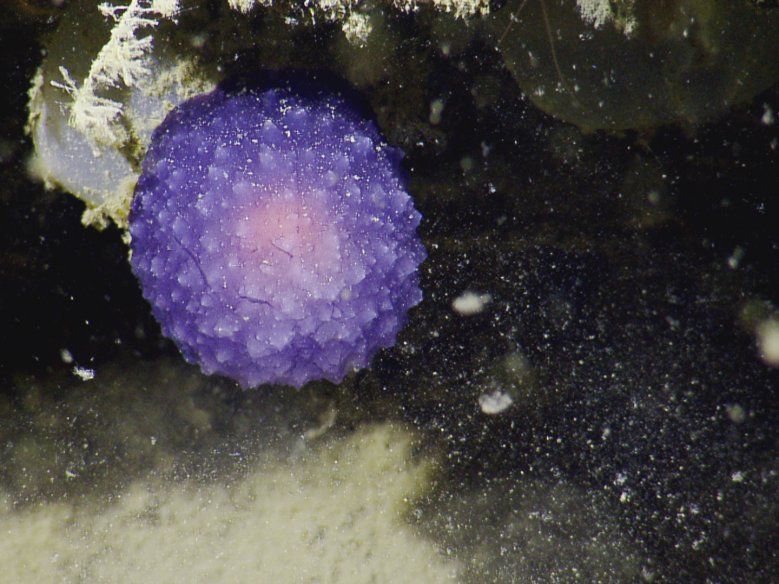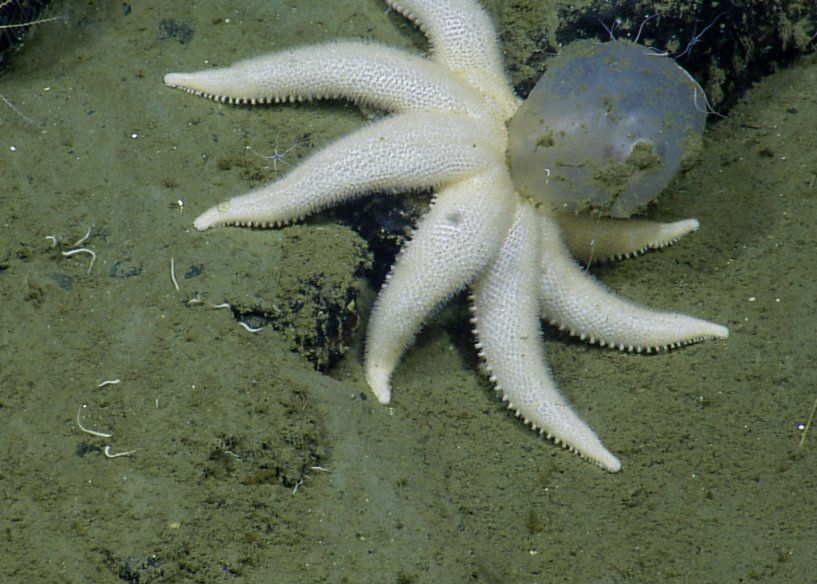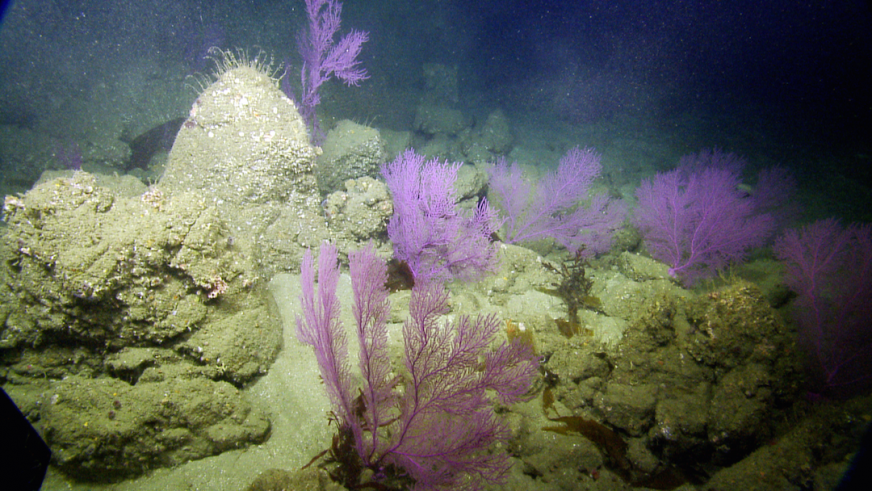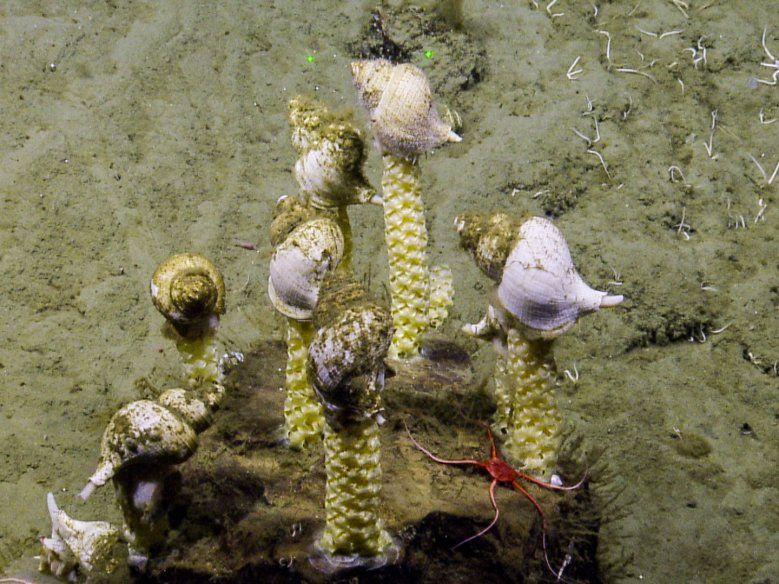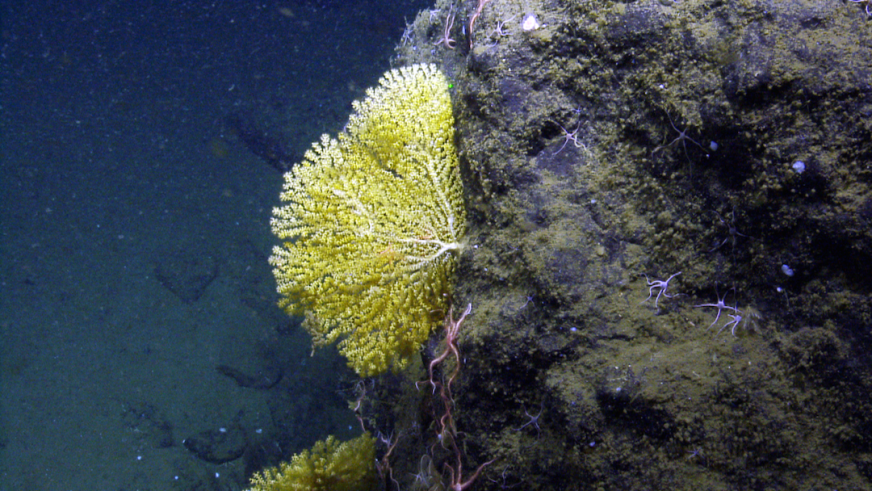Researchers Find Mysterious Purple Orb in the Channel Islands
The creature stumped the team and could be a new species
Channel Islands National Park is a popular day trip from Los Angeles; hundreds of thousands of people make the venture every year. But the eight-island chain, dubbed the Galapagos of the North, still holds plenty of mysteries. In fact, during a recent trip to map the surrounding waters, the team aboard the Nautilus exploration vessel found a strange bright purple ball that looks like an unhatched Pokemon.
When the team stumbled on the blob, which is only a few inches across, they weren't sure what to make of it. In a video recording of the find, one researcher speculates that it is a new type of tunicate, also known as a sea squirt. Other options include some type of sea slug or cnidarian, the group which includes jellyfish and coral.
“I’m stumped, I have no idea—I couldn’t even hazard a guess,” one researcher says in the video.
The team used a vacuum system to slurp up the creature. Once aboard the ship, it began to unfold into two distinct lobes and looked like it could be a new species of nudibranch, according to the team's website. Known for their brilliant hues, nudibranchs are a type of sea slug that inhabit a range of environments.
Jeff Goddard, a marine scientist who studies nudibranchs and soft corals at the University of California, Santa Barbara, has a few other guesses. “Anytime you see a round structure like that you have to consider the possibility it’s an embryo,” he tells Smithsonian.com. Even so, "the purple orb would be an unusual egg mass, especially if it contained a single large egg/embryo," Goddard says. An embryo of what, he's not sure. But he also says it’s possible that it’s a fibrous sponge. Another option is a sea squirt predator. The video shows that it’s the only purple orb in an area full of gray tunicates, so it could be munching on the critters.
It’s not out of the question that it’s a completely new species, says Goddard, who was not involved in the find. In fact, Goddard recently discovered a new species of nudibranch in Santa Barbara County, and says new creatures can be found all over Southern California. “If we’re still discovering new species on the shore,” he says, “just imagine what’s in the deep sea off the coast.”
The orb wasn’t the only awesome find from the trip. While surveying deep reefs in the Sanctuary to identify "essential fish habitats," the Nautilus crew also found whelks building their unusual egg towers, groups of Pacific octopuses protecting their eggs, as well as interesting corals, sea stars and sea fans.
There are likely many more creatures to discover in this region. Less than half of the sea floor has been mapped within the Channel Islands National Marine Sanctuary, which encompasses 1,470 square miles of water around the islands. The Nautilus Exploration Program plans to peer into more of these nooks and crannies, mapping the area and collecting biological samples along their route. The goal is to pay particular attention to the deep-sea habitat and deep coral beds in the area. The purple blob was found on their latest venture, which took place July 3 to July 21.
It may be a while before scientists figure out what the odd spiky orb truly is. But in the meantime, there's so much more to find lurking in the ocean depths.
Editor's Note July 28, 2016: This post has been updated to include comments from Jeff Goddard, a marine scientist from the University of California, Santa Barbara.

